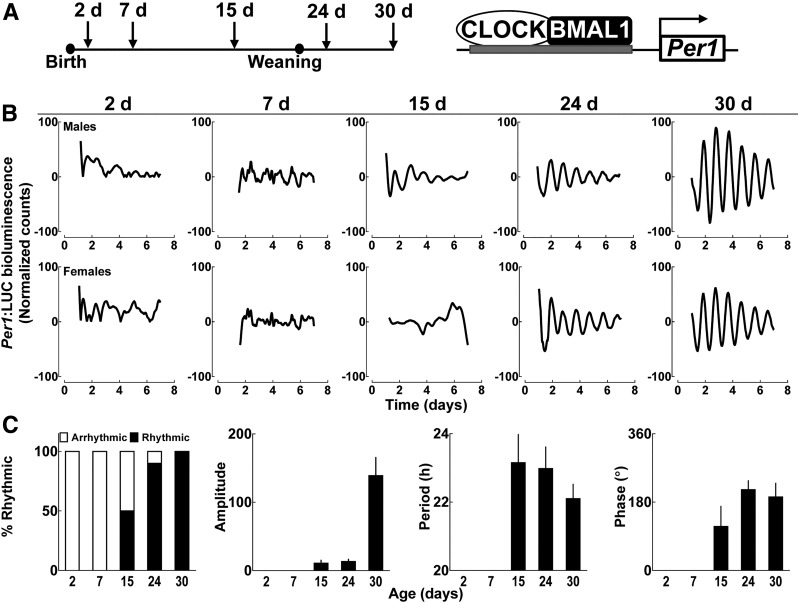Figure 1.
Postnatal emergence of the islet circadian clock function elucidated through real-time bioluminescence monitoring of islets isolated from Per1:LUC transgenic rats. A: Diagrammatic representation of study design indicating that pancreatic islets were isolated from Per1:LUC rat pups at 2, 7, 15, 24, and 30 days postbirth to assess Per1-driven bioluminescence. This is indicative of Per1 promoter activation mediated through binding of core clock transcription factors CLOCK and BMAL1 to upstream regulatory sequences. B: Representative examples of circadian Per1-driven bioluminescence rhythms in batches of 50 islets isolated from Per1:LUC male and female rat pups at postnatal days 2, 7, 15, 24, and 30. Note the appearance of rhythms on day 15 and robust circadian rhythmicity by day 30. C: Bar graphs represent (from left to right) percentage of pups exhibiting statistically significant circadian bioluminescence rhythms, mean amplitude, period, and phase angle of Per1 bioluminescence rhythms at 2, 7, 15, 24, and 30 day postbirth. Values are mean ± SEM (n = 4–10 per data point). The bioluminescence signal was counted in 1-min bins every 10 min for at least 5 days. Data were normalized by subtraction of the 24-h running average from raw data and then smoothed with a 2-h running average (Lumicycle Data Analysis; Actimetrics). d, days.

